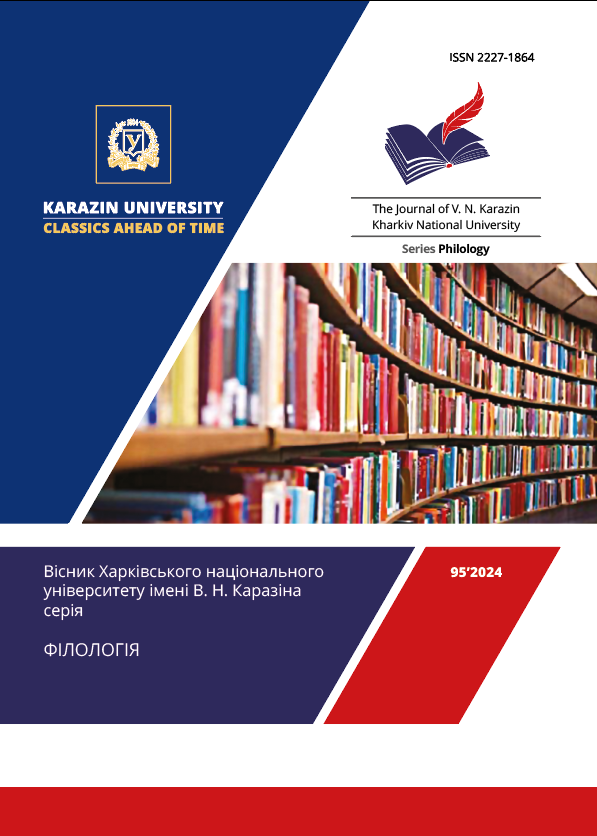Deconstruction of “The Pilgrim’s Progress” by John Bunyan in Kurt Vonnegut’s “Slaughterhouse-Five, or The Children’s Crusade”
Abstract
The US national mythology, one of the components of which is the Puritan cultural heritage, has recently increasingly attracted the attention of researchers of contemporary American literature. The attention often focuses on the problem of the consequences (destructive or beneficial) of postmodern deconstruction regarding the fundamental US myths. The article shows that Kurt Vonnegut in his anti-war postmodernist novel Slaughterhouse-Five manages to create a double code that allows to deconstruct John Bunyan’s important allegorical work The Pilgrim’s Progress, which at one time was an effective means of Protestant religious propaganda, and at the same time to urge readers to return to Christian humanism.
The purpose of the article is to study the deconstruction of Bunyan’s work in Vonnegut’s novel through the lens of jeremiad as the Puritan rhetorical form. The author emphasizes that historically the jeremiad was a sermon for the salvation of the souls of the flock, because it lamented the current state of affairs in society, called to come to its senses and embark on the path of correction. Despite the satire and absurdity of the world in Slaughterhouse-Five, it contains the features of the jeremiad: “an Elect” is Billy Pilgrim, Vonnegut’s alter ego, “an exodus” is his service in the US Army during World War II, “an errand into the wilderness” is Billy’s move to Europe and participation in the Battle of the Bulge, then his capture, and the punishment of sinners – the Dresden tragedy. Fortunately, Billy survives, as if he has “a covenant” with God, and then he fulfils his will and brings to the people – whether from God or from the Tralfamadorian aliens – “providential historical thinking”. The paper considers the connection of the concept of time in the novel with the concept of the triple synthesis of time by Gilles Deleuze, the understanding of time in the works of Saint Augustine, and in the Bible. The use of a SF concept of non-linear time allows Vonnegut to reach a new level of understanding the problems of destination, choice, and responsibility. He creates an alternative to the pilgrim’s progress in Bunyan’s novel, since the linearity of the development of civilization and Protestant ethics lead to catastrophes like World War II.
The author concludes that, despite all the irony, Vonnegut’s novel is not only humanistic, but also deeply Christian, and develops, but already at a modern level, the educational mission that is characteristic of the US literature.
Downloads
References
American literary studies in Ukraine. (2004). K.: Shevchenko Institute of Literature of the National Academy of Sciences of Ukraine. Vol. 1. Puritan tradition in the US literature [In Ukrainian].
Krynytska, N. (2018). Kurt Vonnegut’s Universe. Universe: Ukrainian magazine of foreign literature, 7–8, 166–169 [In Ukrainian].
Revelation of St. John the Theologian (Apocalypse). Bible. Available at : http://hram.in.ua/biblioteka/bibliia/190-book190/2196-title2656 (Accessed 15.10.2024) [In Ukrainian].
Augustine, Saint (1958). City of God. New York: Image Books.
Bercovitch, S. (2012). The American Jeremiad. The University of Wisconsin Press.
Broer, L. Sanity Plea: Schizophrenia in the Novels of Kurt Vonnegut. Tuscaloosa : University of Alabama Press, 1994. 264 p.
Bunyan, J. (1678/ 1980). The Pilgrim’s Progress. Roger Sharrock (Ed.). Harmondsworth : Penguin.
Deleuze, G. (1994). Difference and repetition. Paul Patton (Transl.). Columbia University Press.
Flexer, M. (2020). The ‘telegraphic schizophrenic manner’: Psychosis and a (non)sense of time. Time & Society, 29(2), 444-468. DOI:10.1177/0961463X20916109.
Hinchcliffe, R. (2002). ‘Would’st Thou be in a Dream:’ John Bunyan’s The Pilgrim’s Progress and Kurt Vonnegut’s Slaughterhouse-Five. European Journal of American Culture, 20.3, 183–196.
Leise, Ch. (2017). The Story upon a Hill: The Puritan Myth in Contemporary American Fiction. Tuscaloosa: University of Alabama Press.
Oswitch, S. (1956). A Conversation with Paul Tillich. – 1/3. Video Dailymotion. URL: https://www.dailymotion.com/video/xiyywn (Last accessed: 15.10.2024).
Schneider, M. J. (2019). The Jeremiad in American Science Fiction Literature, 1890-1970. (PHD Diss.). The University of Wisconsin-Milwaukee.
Vonnegut, K. (2011). A Man Without a Country. NY: Seven Stories Press.
Vonnegut, K. (1969/1991). Slaughterhouse-Five or The Children’s Crusade: A Duty-Dance with Death. London : Vintage.
Weber, M. (1968). The Protestant Ethic and the Spirit of Capitalism. Talcott Parsons (Trans.). London: Unwin University Books.




